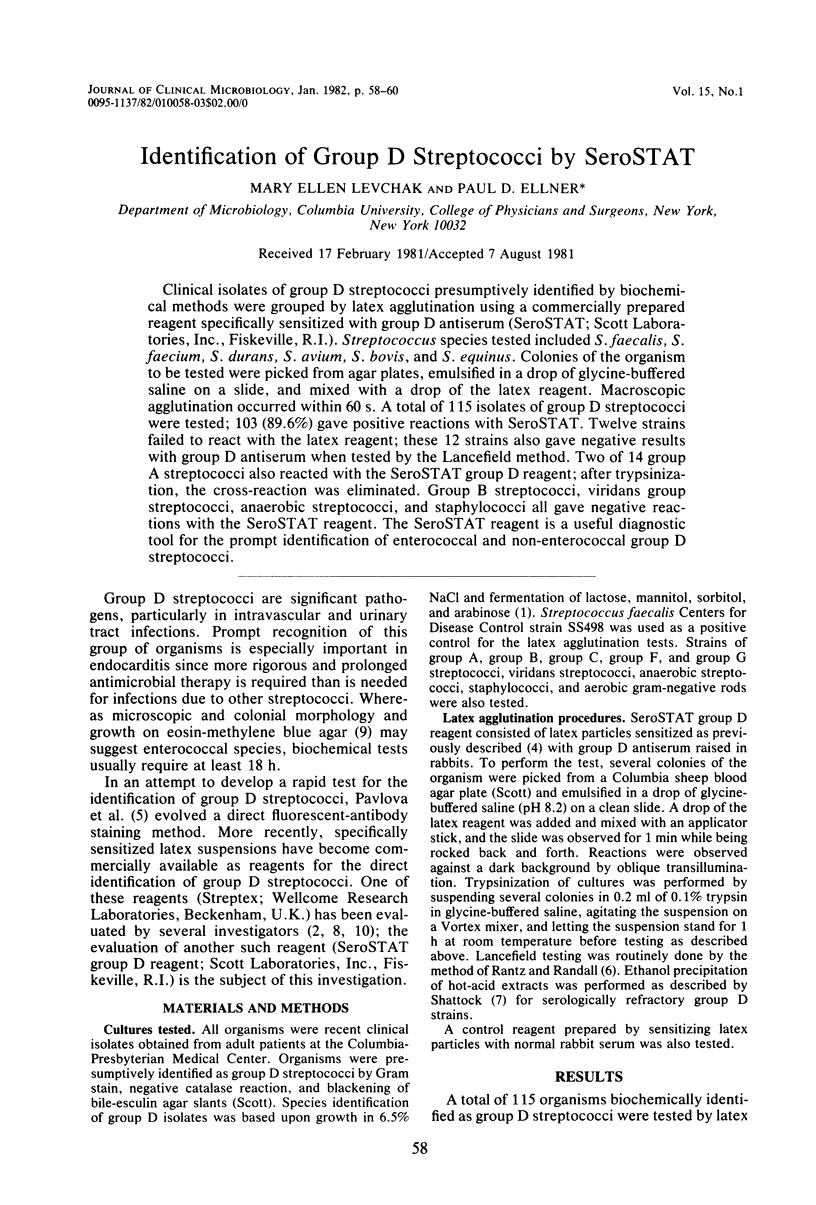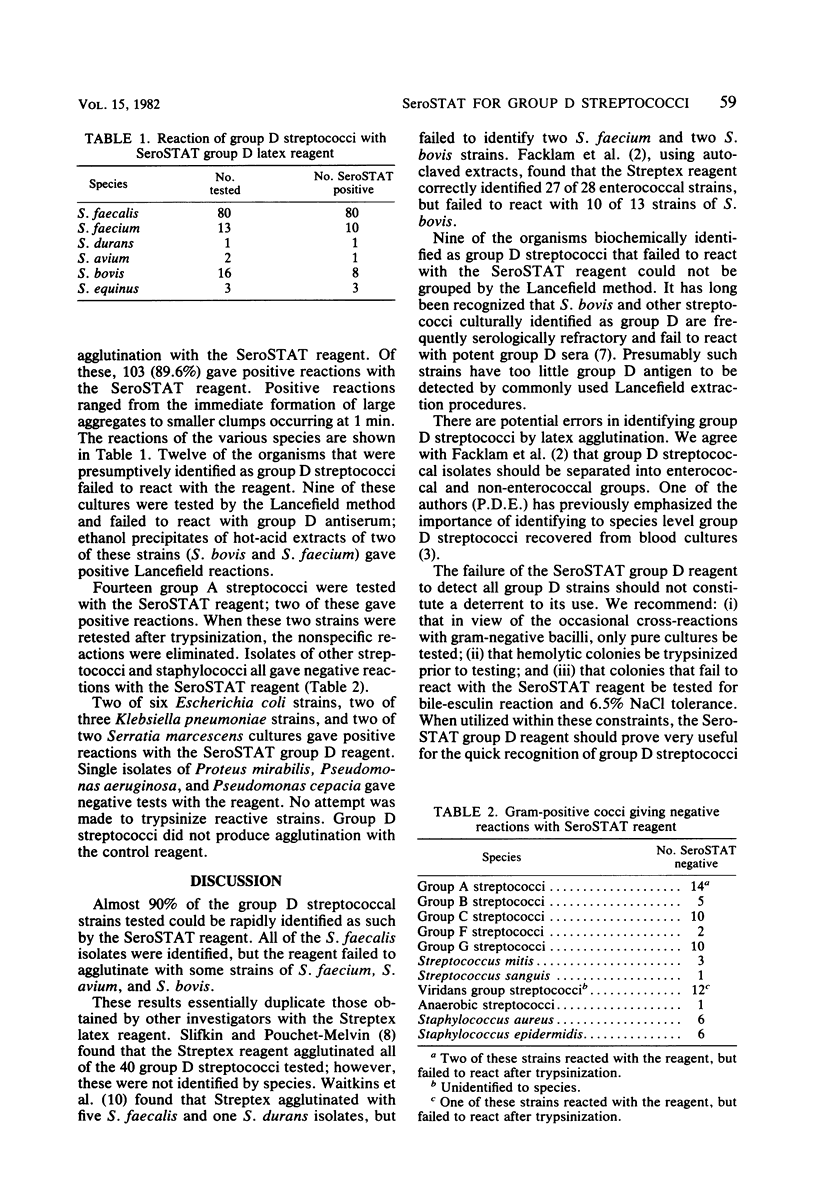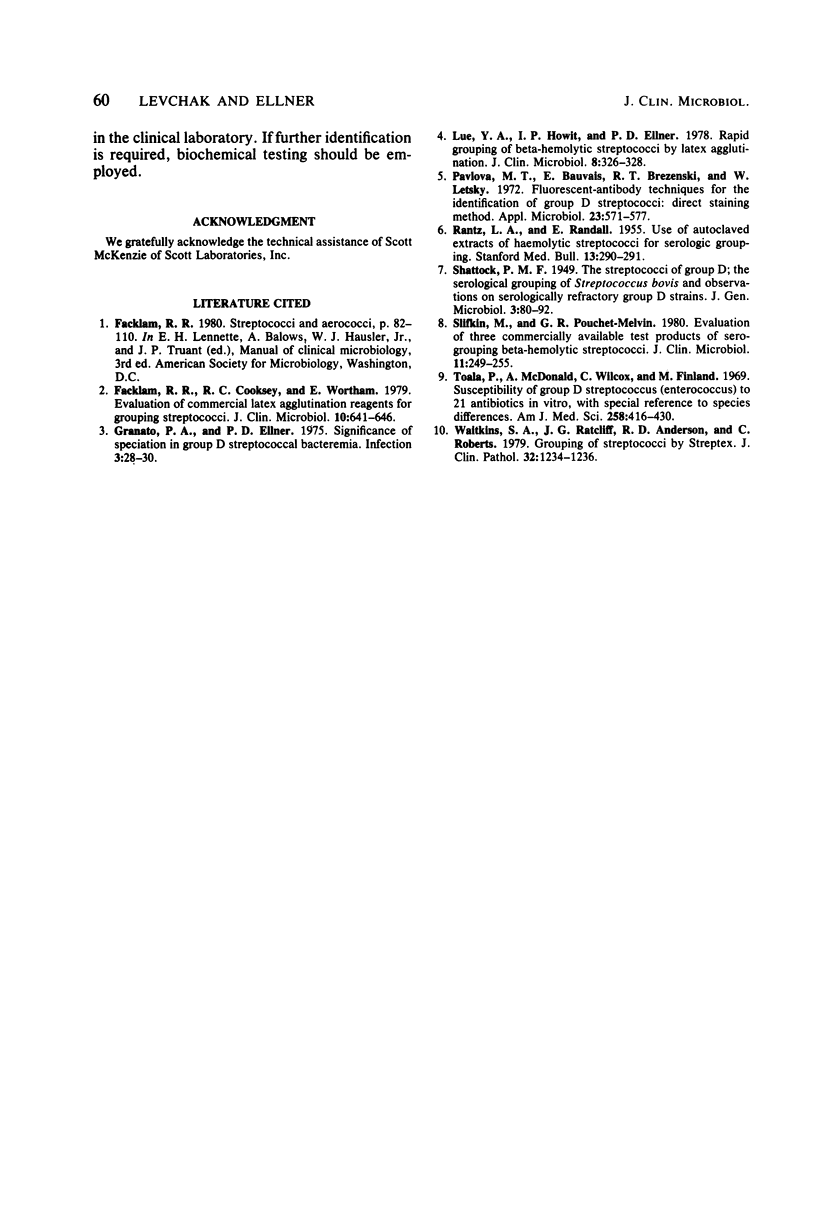Abstract
Clinical isolates of group D streptococci presumptively identified by biochemical methods were grouped by latex agglutination using a commercially prepared reagent specifically sensitized with group D antiserum (SeroSTAT; Scott Laboratories, Inc., Fiskeville, R.I.). Streptococcus species tested included S. faecalis, S. faecium, S. durans, S. avium, S. bovis, and S. equinus. Colonies of the organism to be tested were picked from agar plates, emulsified in a drop of glycine-buffered saline on a slide, and mixed with a drop of the latex reagent. Macroscopic agglutination occurred within 60 s. A total of 115 isolates of group D streptococci were tested; 103 (89.6%) gave positive reactions with SeroSTAT. Twelve strains failed to react with the latex reagent; these 12 strains also gave negative results with group D antiserum when tested by the Lancefield method. Two of 14 group A streptococci also reacted with the SeroSTAT group D reagent; after trypsinization, the cross-reaction was eliminated. Group B streptococci, viridans group streptococci, anaerobic streptococci, and staphylococci all gave negative reactions with the SeroSTAT reagent. The SeroSTAT reagent is a useful diagnostic tool for the prompt identification of enterococcal and non-enterococcal group D streptococci.
Full text
PDF


Selected References
These references are in PubMed. This may not be the complete list of references from this article.
- Facklam R. R., Cooksey R. C., Wortham E. C. Evaluation of commercial latex agglutination reagents for grouping streptococci. J Clin Microbiol. 1979 Nov;10(5):641–646. doi: 10.1128/jcm.10.5.641-646.1979. [DOI] [PMC free article] [PubMed] [Google Scholar]
- Lue Y. A., Howit I. P., Ellner P. D. Rapid grouping of beta-hemolytic streptococci by latex agglutination. J Clin Microbiol. 1978 Sep;8(3):326–328. doi: 10.1128/jcm.8.3.326-328.1978. [DOI] [PMC free article] [PubMed] [Google Scholar]
- Pavlova M. T., Beauvais E., Brezenski F. T., Litsky W. Fluorescent-antibody techniques for the identification of group D streptococci: direct staining method. Appl Microbiol. 1972 Mar;23(3):571–577. doi: 10.1128/am.23.3.571-577.1972. [DOI] [PMC free article] [PubMed] [Google Scholar]
- RANTZ L. A., RANDALL E. Use of autoclaved extracts of hemolytic streptococci for serological grouping. Stanford Med Bull. 1955 May;13(2):290–291. [PubMed] [Google Scholar]
- Slifkin M., Pouchet-Melvin G. R. Evaluation of three commercially available test products for serogrouping beta-hemolytic streptococci. J Clin Microbiol. 1980 Mar;11(3):249–255. doi: 10.1128/jcm.11.3.249-255.1980. [DOI] [PMC free article] [PubMed] [Google Scholar]
- Toala P., McDonald A., Wilcox C., Finland M. Susceptibility of group D streptococcus (enterococcus) to 21 antibiotics in vitro, with special reference to species differences. Am J Med Sci. 1969 Dec;258(6):416–430. doi: 10.1097/00000441-196912000-00006. [DOI] [PubMed] [Google Scholar]
- Waitkins S. A., Ratcliffe J. G., Anderson R. D., Roberts C. Grouping of streptococci by Streptex. J Clin Pathol. 1979 Dec;32(12):1234–1236. doi: 10.1136/jcp.32.12.1234. [DOI] [PMC free article] [PubMed] [Google Scholar]


